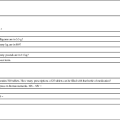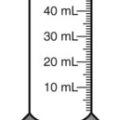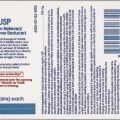Comparisons of Measurement Systems
• Know standard abbreviations for the household, metric, and apothecary systems used in the medical field
• Identify, convert, and calculate using household measurements of length, weight, and volume found in the medical field
• Identify, convert, and calculate using International System of Units (SI), or metric, measurements of length, weight, and volume found in the medical field
• Identify, convert, and calculate using apothecary system measurements of weight and volume found in the medical field
Introduction
Length is used in household and metric systems to measure height or body circumference as well as length of a suture line. In pharmacy, length is only used to measure medications that require application to the body that must be measured in inches or centimeters or millimeters. In this case, the means of application is usually premarked on a dispensing paper for ease in ensuring that the correct amount of medication is being administered, such as with nitroglycerin ointment. Another pharmaceutical use of length is in finding body surface area (BSA) in which height and weight are compared for dosage calculation (BSA is discussed in Chapter 10). Length measurements also include inches, feet, centimeters, meters, kilometers, yards, and miles.
Some of the previously mentioned measurements are those you use daily, whereas others may be foreign and need explanation. This chapter covers the basic measurements per system, which are essential for learning conversions in Chapter 5.
Household Or U.S. Customary System
Household measurements are expressed in Arabic numbers with the abbreviation for each following the number, such as 5 tsp or  pt. Table 4-1 provides the basic household measurements for weight accompanied by abbreviations and equivalents as appropriate.
pt. Table 4-1 provides the basic household measurements for weight accompanied by abbreviations and equivalents as appropriate.
TABLE 4.1
Household Measurements of Weight
| MEASUREMENT UNIT | ABBREVIATION | EQUIVALENT |
| Ounce | oz | — |
| Pound | lb, # | 16 oz |
| Ton | T | 2000# |
Some medication labels include household measurements as well as metric measurements as seen on the label for Retrovir (Figure 4-1).
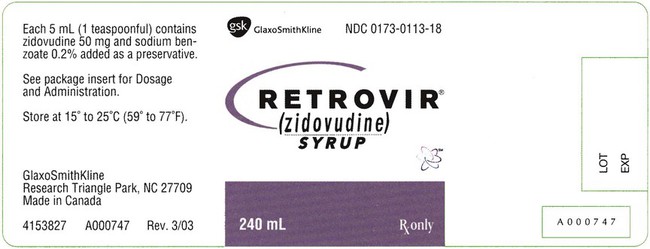
Table 4-2 gives the measurements of length often seen in the medical setting. A mile is also a measurement of length but is not used in pharmaceutical calculations.
TABLE 4.2
Household Measurements of Length
| MEASUREMENT UNIT | ABBREVIATION | EQUIVALENTS |
| Inch | in, ″ | — |
| Foot | ft, ′ | 12 inches |
| Yard | yd | 36 inches, 3 feet |
Table 4-3 shows the household measurements of volume or liquid used most frequently in the home and in pharmaceutical calculations. Always remember that the size of a drop is totally dependent on the size of the opening in the dropper and viscosity of the liquid; therefore the 60 drops per teaspoon often found in measurement tables for household measurements is only an approximation. Drops used with intravenous therapy are stated in invariable amounts in the metric system as will be seen in later chapters. Also, household utensils are not necessarily accurate, so the amounts measured in these utensils should be considered only approximations.
TABLE 4.3
Household Measurements of Volume
| MEASUREMENT UNIT | ABBREVIATION | EQUIVALENTS |
| Drops | gtts | — |
| Teaspoon | tsp, Tsp, t | 60 drops (depending on the size of the dropper and the viscosity of the medication) |
| Tablespoon | tbsp, Tbsp, tbs, T | 3 teaspoons |
| Ounce | oz | 2 tbsp or 6 tsp |
| Cup | C, c | 8 oz |
| Pint | pt | 2 c, 16 oz |
| Quart | qt | 2 pt, 4 c, 32 oz |
| Gallon | gal | 4 qt, 8 pt, 16 c, 128 oz |
Metric System of Measurement
Labels in the metric system are shown in the appropriate metric unit. However, some labels still contain abbreviations that are found on The Joint Commission “Do Not Use” List, such as µg for microgram as found on the label for Lanoxin in Figure 4-2.

See Figure 4-3 for basic metric units with their prefixes and Tables 4-4 and 4-5 for a summary of the metric system and its equivalents.
TABLE 4.4
| UNIT | WEIGHT | VOLUME | LENGTH |
| Basic unit | gram (G, g, gm, Gm) | liter (L, l) | meter (M, m) |
| 1000 units | kilogram (kg, kG) | kiloliter | kilometer (km) |
| 100 units | hectogram* | hectoliter | hectometer |
| 10 units | dekagram | dekaliter | dekameter |
| 1/10th unit | decigram | deciliter | decimeter |
| 1/100th unit | centigram | centiliter | centimeter (cm) |
| 1/1000th unit | milligram (mg, mG) | milliliter (ml, mL) | millimeter (mm) |
| 1/1,000,000th unit | microgram (mcg) | microliter | micrometer (mcm) |
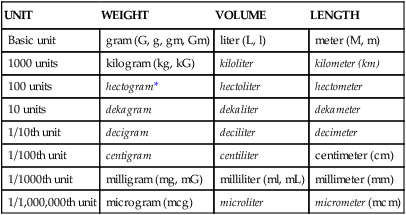
*The measurements found in italics are those that are not commonly used in calculating pharmaceutical dosages in heights, weights, or volumes. Measurements with abbreviations are those that are commonly used in pharmacology.
TABLE 4.5
Equivalents in the Metric System
| TYPE OF SUBSTANCE | ABBREVIATION | UNIT OF MEASURE | COMMON EQUIVALENTS |
| Volume/Liquid | L, l | liter | 1000 mL, 1000 cc* |
| mL, ml, cc* | milliliter, cubic centimeter* | 0.001 L | |
| Weight | G, g, gm, Gm | gram | 1000 mg, 0.001 kG |
| kG, kg | kilogram | 1000 g | |
| mG, mg | milligram | 0.001 gm, 1000 mcg | |
| mcg | microgram | 0.000001 gm, 0.001 mg | |
| Length | M, m | meter | 100 cm, 1000 mm |
| cm | centimeter | 0.01 m, 10 mm | |
| mm | millimeter | 0.001 m, 0.1 cm |
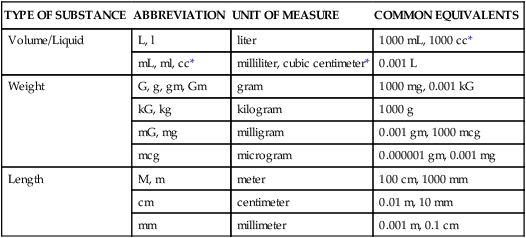
*A cubic centimeter (cc) is another way to express a milliliter. A cubic centimeter is the amount of space that is required to hold a milliliter of liquid. The abbreviation “cc” is found on the “Do Not Use” list but is often still used in ambulatory care.
Converting from Larger Metric Numbers to Smaller Metric Numbers
The metric system is easy for conversions from one unit to the next because multiples of 10 are the base for the system. The placement of the decimal point is based on moving from the different powers of 10 by moving the decimal point. When moving from a larger metric unit to a smaller one, move the decimal point to the right the number of times that the unit is larger than the smaller unit or multiply by the number of zeros in the equivalent (large to small → multiply). See Examples 4-5 and 4-6.
Converting from a Smaller Metric Number to a Larger Metric Number
If the movement is from a smaller to larger unit, move the decimal point to the left the number of times the unit is smaller or divide by the number of zeros found in the desired equivalent (small to large ← divide). To change a kilogram to a milligram, a kilogram is larger than a milligram, so we must move the decimal to the left. A kilogram has six zeros when moving to a kilogram, so we want six places behind the decimal point. See Examples 4-7 and 4-8.
Using a Mnemonic to Convert Within the Metric System
To use Figure 4-4, circle the two letters on the metric line that are stated in the desired conversion. Place the given amount on the metric line with the decimal point in the correct place on the line. (Remember that the decimal point in a whole number follows the number.) Now place a decimal point directly behind the letter on the line for the desired placement value and add zeros under each letter of the metric scale using the mnemonic until the desired metric unit is reached. See Figure 4-3 for the basic units of measure.
Apothecary System Of Measurement
The metric system is the preferred measurement system; however, the apothecary system can still be found on rare occasions, especially with older medications, such as Nitrostat as seen in Figure 4-5. Other places where apothecary measurements are found are syringes, such as minims ( ); drams (
); drams ( ) are found on medication-dispensing cups even though the use of these items and measurements are discouraged. These apothecary abbreviations are also found on the “Do Not Use List.”
) are found on medication-dispensing cups even though the use of these items and measurements are discouraged. These apothecary abbreviations are also found on the “Do Not Use List.”
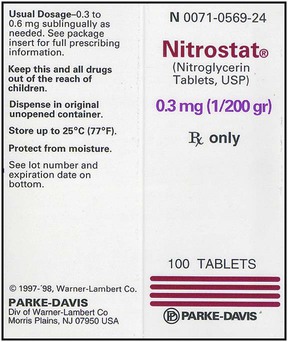
In ancient times, a minim (drop) of water was considered to weigh the same as a grain of wheat. Therefore the basic unit of liquid in the apothecary system is a minim ( ) and the basic unit of weight is a grain (gr). See Table 4-6 for equivalents in the apothecary system.
) and the basic unit of weight is a grain (gr). See Table 4-6 for equivalents in the apothecary system.
TABLE 4.6
Equivalents in the Apothecary System
| TYPE OF SUBSTANCE | ABBREVIATION | UNIT OF MEASURE | COMMON EQUIVALENTS |
| Volume/Liquid |  |
minim | — |
 |
fluid dram |  lx (60) lx (60) |
|
 |
fluid ounce |  viii (8) viii (8) |
|
| Mass/Weight | gr | grain | — |
 |
dram | gr lx (60) | |
 |
ounce |  viii (8) viii (8) |
|
| # | pound |  xii (12)* xii (12)* |
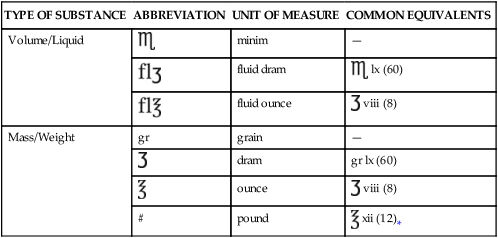
*Note that in the apothecary system a pound is only 12 ounces, but this not used on a regular basis in pharmacy calculations.
Review of Rules
Steps for Solving the Unknown Using Proportion
• Identify the unknown unit of measurement.
• Find the known equivalent for the problem to be solved.
• Write the known equivalent on the left side of the proportion.
• Write the unknown desired on the right side of the proportion with the identical measurement indicators in the same positions in the equation as was found in the known measurement equivalents (i.e., inches : feet :: inches : feet or tsp : tbsp :: tsp : tbsp).
• Solve the equation by cross-multiplication of means and extremes, or “insies” and “outsies.”
Steps for Solving the Unknown Using Fractions and Cross-Multiplication
• Identify the unknown unit of measurement.
• Find the known equivalent for the problem to be solved.
• Write the known equivalents in a fractional unit on the left side of the equation.
• Write the unknown desired equivalent on the right side of the equation in the same position as the known equivalent using x as the indication of the unknown. Be sure to keep measurement indicators in the same positions.
• Cross-multiply numerators and denominators to solve for the unknown.
Rules for Calculating Equivalents within the Metric System
• The metric system is actually a system of “place values” with the base being the unit of measure from which the place value is measured. That is, gram, meter, and liter are at place value “1,” kilos are at place 103 and millis are 10–3. Therefore micros would be 10–6.
• When using the metric system of measurement, the numeral unit is written before the abbreviation such as 10 mg, 2.5 cc, or 1.5 L.
• All fractions are written as decimals such as 1.5 mL, 2.5 gm, or 2.75 m.
• A zero should always be placed before a decimal point when the number is less than a whole number to prevent confusion and a possible error in calculating dosage. For example, .25 mg might be misread as 25 mg if the metric number had not been written 0.25 mg. The potential error would be 100 times too much medication being given to the patient. ALWAYS BE SURE THAT ANY METRIC NUMBER WITH A DECIMAL NUMBER HAS EITHER A “0” OR A NUMBER PRECEDING THE DECIMAL POINT.
• Any unnecessary or trailing zeros should be eliminated from the number (e.g., 2.50 mg should read as 2.5 mg, 1.500 L should read as 1.5 L). Remember, zeros found at the end of a number behind the decimal point may be removed without changing the value of the number.
• Avoid using a decimal number if a whole number can be used (e.g., 0.5 g would be better expressed as 500 mg).
Rules for Using the Metric Mnemonic for Conversions
• Write the metric scale (K H D B D C M _ _ M).
• Circle the two units found in the conversion.
• Count the number of metric units between the two circled units (the known and the unknown units) and add zeros under the units on the metric scale.
• Move the decimal point from behind the known amount to behind the unknown amount in the direction noted by the movement on the scale.
• Drop any unnecessary or trailing zeros that are found in front of or behind the decimal point.
Rules for Using the Apothecary System
• Numbers in the apothecary system are written in Roman numerals for those less than 10 and for 20 and 30. Other numbers may be written in Arabic numbers.
• Fractions are written as fractional units except 1/2, which is written as “ .”
.”
• Numbers below 10 should be written with a line over them, although this line is not used as often as it used to be.
• When writing in the apothecary system, the measurement is abbreviated and the numeral unit follows or is placed to the right of (behind) the abbreviated symbol (e.g., 5 oz would be written  v).
v).

 _____________________
_____________________ _____________________
_____________________ _____________________
_____________________ viii =
viii =  _____________________
_____________________ ii =
ii =  _____________________
_____________________ =
=  _____________________
_____________________ iv =
iv =  _____________________
_____________________ ,
,  , or
, or  . For example, a teaspoon and a half would be expressed as
. For example, a teaspoon and a half would be expressed as  tsp. You will later learn that the apothecary system also uses fractions, whereas the metric system uses decimal values.
tsp. You will later learn that the apothecary system also uses fractions, whereas the metric system uses decimal values.













 ″. What would this be in inches? (1 ft = 12 inches)
″. What would this be in inches? (1 ft = 12 inches)



 ″ to the 24″ as indicated in the problem.
″ to the 24″ as indicated in the problem. ″.
″.











 oz = __________ tsp
oz = __________ tsp # = __________ oz
# = __________ oz tbsp = __________ tsp
tbsp = __________ tsp tbsp = __________ gtts
tbsp = __________ gtts tsp of amoxicillin.
tsp of amoxicillin.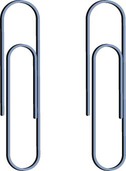


 inch long and less than
inch long and less than  inch in diameter. Fifteen grains make one gram.
inch in diameter. Fifteen grains make one gram.


















 liter. How many milliliters is this? __________
liter. How many milliliters is this? __________ to a decimal first.
to a decimal first. ,
,  ,
,  ,
,  ,
,  and
and  Arabic numerals may be used for numbers higher than 10, except with 20 (
Arabic numerals may be used for numbers higher than 10, except with 20 ( ) and 30 (
) and 30 ( ), for which Roman numerals are required. Over the years, the use of the line over the Roman numeral has gradually diminished, but using it is the correct notation. The proper abbreviation is written first with Roman numerals placed to the right of the unit of measure—the opposite placement as found with metric and household. Most fractions are written using Arabic numbers such as
), for which Roman numerals are required. Over the years, the use of the line over the Roman numeral has gradually diminished, but using it is the correct notation. The proper abbreviation is written first with Roman numerals placed to the right of the unit of measure—the opposite placement as found with metric and household. Most fractions are written using Arabic numbers such as  or
or  , except
, except  , which is abbreviated as
, which is abbreviated as  . The abbreviation
. The abbreviation  actually means “semis.” Also of importance is that decimals are not used with the apothecary system.
actually means “semis.” Also of importance is that decimals are not used with the apothecary system. v, or 10 drams would be
v, or 10 drams would be  x).
x).







 .
. ) and ounce (
) and ounce ( ), be sure to count the loops on the symbol for accuracy in measurements.
), be sure to count the loops on the symbol for accuracy in measurements. vi =
vi =  __________
__________ xii =
xii =  __________
__________ __________
__________ __________
__________ __________
__________ v =
v =  __________
__________ ii =
ii =  __________
__________ iii =
iii =  __________
__________ vi =
vi =  __________
__________ xx =
xx =  __________
__________ __________
__________ x =
x =  __________
__________ xvi =
xvi =  __________
__________ xx =
xx =  __________
__________ xxiv =
xxiv =  __________
__________ viii =
viii =  __________
__________ iii
iii  =
=  __________
__________ 1 1/4 =
1 1/4 =  __________
__________ viii.
viii. would that be? __________
would that be? __________